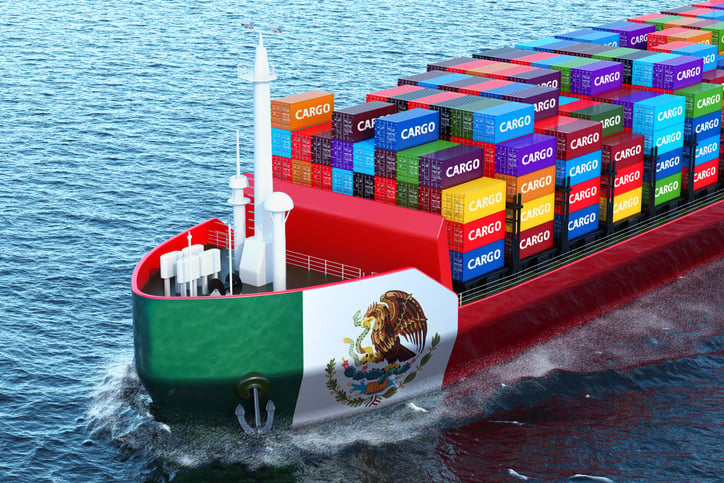Investing in supply chain planning is essential for businesses to enhance their reliability and boost their overall performance. By carefully planning their supply chain operations, companies can streamline processes, reduce costs, and improve delivery times, resulting in increased customer satisfaction. This, in turn, leads to a stronger competitive edge and greater profitability.
Supply chain planning is a crucial aspect of any business, as it determines the seamless flow of goods and services from suppliers to customers. In the constantly evolving business landscape, efficient supply chain planning is a must for businesses looking to succeed in the long run.
What is the Supply Chain?
A supply chain is a network of individuals, organizations, activities, information, and resources involved in the production and delivery of a product or service, from the sourcing of raw materials to the delivery of the final product to the customer.
It includes all the activities involved in sourcing raw materials, manufacturing, distributing, and delivering the final product, as well as any activities that support these processes, such as transportation, storage, and information management. The goal of the supply chain is to deliver the right product, at the right time, and at the right cost, to the end customer.
Supply Chain Examples
The Basic Supply Chain Process: From Raw Materials to Finished Product
The basic supply chain starts with the procurement of raw materials from various sources. These raw materials are then transported by a logistics provider to a supplier, who acts as a wholesaler. The supplier then delivers the raw materials to a manufacturer or multiple manufacturers who refine and process them into a finished product.
After the final product is manufactured, it moves on to a distributor who acts as a wholesaler. The distributor then delivers the product to a retailer that sells it in-store to customers. Once the consumer makes a purchase, the cycle is complete, and the demand for the product drives the production of more raw materials, starting the process anew. This continuous flow of goods and services represents the cyclical nature of the supply chain.
The Basics of the E-Commerce Supply Chain Process
In the context of e-commerce, the company operates an online platform that sells various products to customers. When a customer places an order, technology such as a shopping cart, order management system, or third-party platform processes the order. The payment processors then step in to handle the payment transactions for the order, thereby initiating a new supply chain process. The seamless integration of technology and efficient payment processing is what makes e-commerce a vital component of modern business.
Payment processing in the e-commerce supply chain is often handled by third-party providers such as PayPal and Stripe, which work in conjunction with banks and other service providers. When a customer places a product order, the warehouse receives the request and prepares the product for delivery. The warehouse can either be managed internally by the e-commerce company or by a third-party logistics provider. The efficient coordination of payment processing and warehousing is essential for ensuring a smooth and seamless e-commerce experience for customers.
Once the product is ready for shipment at the warehouse, it is sent to the shipping company. Upon successful delivery, the package arrives at the customer's doorstep, marking the completion of the e-commerce supply chain journey. This seamless integration of technology and logistics ensures that the customer receives their purchase in a timely and satisfactory manner.
How Can a Supply Chain Management Plan Help Your Business?
Supply chain planning systems play a pivotal role in the success of any business. By investing in supply chain planning, businesses can gain a competitive edge and improve their overall performance in several ways.
● Improving efficiency: By planning their supply chain operations, businesses can identify bottlenecks and inefficiencies in the process and make improvements to streamline their operations, leading to greater efficiency and productivity.
● Reducing costs: An effective supply plan can help businesses reduce costs by minimizing waste, optimizing inventory levels, and reducing lead times.
● Improving customer satisfaction: With a well-planned supply chain, businesses can ensure that products are delivered on time and in the right quantities, leading to increased customer satisfaction.
● Managing risk: Supply planning can help businesses identify and mitigate risks, such as fluctuations in demand or supply, to ensure that they are prepared for potential disruptions and can continue to meet customer needs.
● Competitive advantage: A well-planned and executed supply chain can provide a competitive advantage by allowing businesses to respond quickly to market changes, deliver products more efficiently, and reduce costs.
Steps in the Supply Chain Planning Process
A good supply chain process is a crucial aspect of business operations, and it involves several key steps to ensure a smooth and efficient flow of goods and services. These steps include supply management, demand management, production planning, operations planning, and sales planning.
- Step 1: Supply Management. Supply management involves the sourcing and procurement of raw materials and other resources required for production.
- Step 2: Demand Management. Demand management focuses on understanding and predicting customer demand to ensure that the right products are produced in the right quantities.
- Step 3: Production Planning. Production planning involves the planning and scheduling of production processes to meet demand.
- Step 4: Operations Planning. Operations planning focuses on the coordination and optimization of production processes and resources.
- Step 5: Sales Planning. Sales planning involves the development of sales strategies to meet customer demand and maximize revenue.
- Step 6: Risk Planning. Risk planning involves evaluating problems that may arise and creating risk mitigation strategies to minimize supply chain disruption. These risks include significant lead time changes and variability, suppliers going out of business, customers cutting back on orders, shipping disruptions, and other risk factors.
- Step 7: Resiliency Planning. Resiliency planning involves modifying supply chains to be able to respond when a problem arises. For example, many companies source products from China but when Covid was at its height, companies struggled to move products from China to Mexico. to create resiliency in their supply chains, companies are looking at alternative countries, such as Mexico to manufacture products.
By effectively executing each of these steps, businesses can ensure that their supply chain processes run smoothly and support their overall business goals.
Consistent Execution Produces Reliability in the Supply Chain
Standard Operating Procedures (SOPs) can play a significant role in ensuring consistent execution of the supply chain process. SOPs are detailed, step-by-step instructions for performing specific tasks or processes that are designed to achieve consistent results. In the context of the supply chain, SOPs can help ensure that all processes are executed in a consistent and controlled manner, resulting in improved efficiency, quality, and reliability.
SOPs can cover all aspects of the supply chain, from sourcing raw materials and production planning to order fulfillment and delivery. By having clear and detailed SOPs in place, businesses can reduce the risk of errors, deviations, and inconsistencies that can negatively impact the supply chain process. SOPs can also provide a standard framework for continuous improvement, allowing businesses to identify areas for improvement and make changes to optimize their supply chain processes.
Maximize Your Business Potential with Supply Chain Consulting Services
Investing in a supply chain consultant is a smart move for businesses looking to improve their supply chain efficiency and reliability. With expertise in industry best practices, technology implementation, and contingency planning, these experts can bring a fresh perspective and identify areas for improvement. By streamlining processes, reducing waste, and optimizing resources, a consultant can help businesses realize cost savings and improved customer satisfaction. Don't let supply chain issues hold your business back, invest in a consultant today and enjoy the benefits of a reliable and efficient supply chain.





